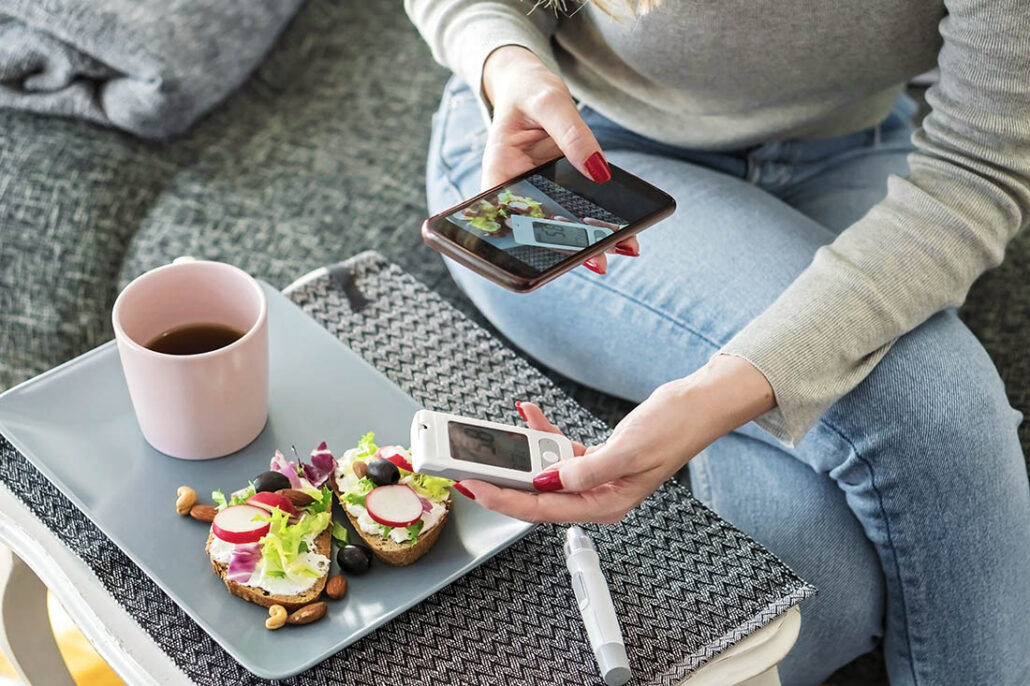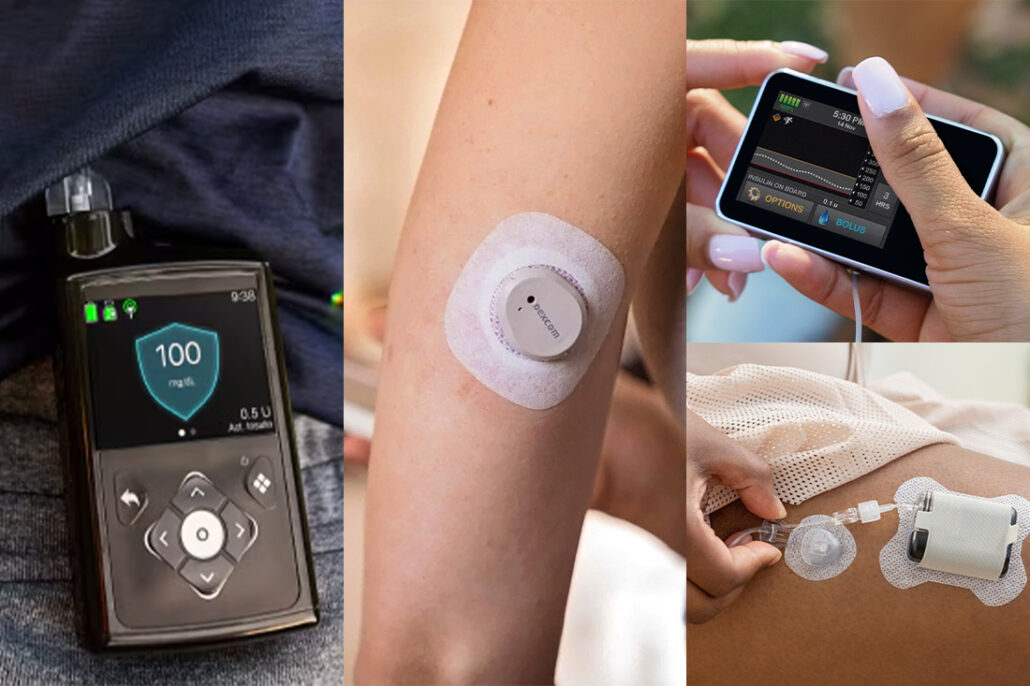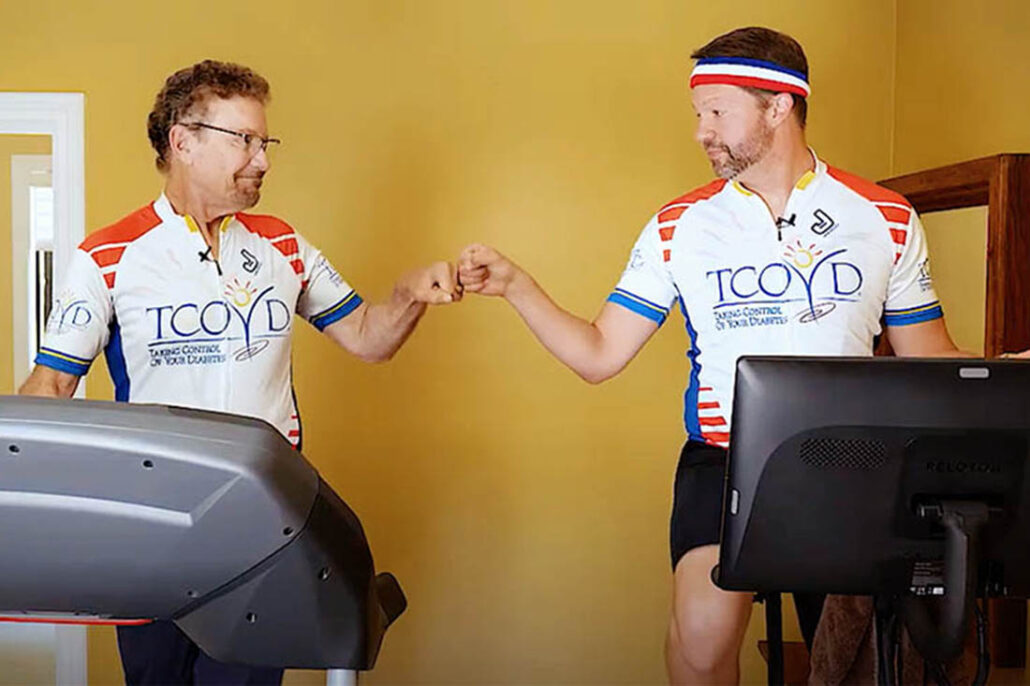
Updated April 28, 2025
- Diabetes Distress is a common condition caused by the daily burdens of living with diabetes.
- Engaging in activities that promote well-being – such as exercise, healthy eating, and rest – can help.
- Taking time for yourself, pursuing hobbies you enjoy, and connecting with others can significantly reduce diabetes-related stress.
- While self-care strategies can be effective, persistent distress may indicate a deeper issue, and professional help should be sought.
Reading Time: 5 minutes
Living with diabetes is tough: extra daily responsibilities, inconveniences, discomfort, costs, inconsistencies, and never being sure about what the future holds. It’s no wonder that people with diabetes are 2 to 3 times more likely to have depression than people without diabetes.
Medical professionals with lots of letters after their names have even coined a term for that generally crappy, burned-out feeling we can all experience: Diabetes Distress.
Since there is no way to simply “turn off” diabetes, what can be done if you just want to feel better when experiencing diabetes burnout?
Here’s an idea that’s so crazy, and it just might work. Try doing something GOOD.
Before you poo-poo it, hear me out. Think about how you felt the last time you did something genuinely good, like giving someone a gift, helping a neighbor, or completing a tough project.
I’ll bet you felt genuinely good. It is natural to feel good after doing something that requires effort or sacrifice and produces a nice result. In diabetes-specific terms, there are many things you can do that are genuinely good and will leave you feeling satisfied and refreshed.
1. Get Some Physical Activity

A good workout works wonders for one’s mood and outlook when living with diabetes. The endorphins produced during exercise help to alleviate discomfort, and there’s a general sense of euphoria that many people experience during and after. Call it a “runner’s high,” a “walker’s high” a “dancer’s high” or even a “gardener’s high” (depending on what you’re growing). This kind of high is genuinely good.
2. Have a Truly Healthy Meal

Nothing against treats and sweets, but comfort foods provide very short-term satisfaction if you are experiencing diabetes burnout. If you want a lasting feeling of satiety, prepare and enjoy a nutritious home-cooked meal.
Think to yourself… is this something my mom would make for me? Include lean protein, whole grains, and lots of vegetables, along with some fresh, in-season fruit for dessert. You never know… healthy eating could become habit forming. But even if it doesn’t, even one healthy meal can be enough to make you feel good inside.
3. Take Time for Yourself

Mental health is health. This is even more true with diabetes and mental health. And there’s no better way to escape day-to-day distress than with a good distraction. Chat or get together with a friend you haven’t seen in a while. Watch a favorite movie. Go out and discover nature. Plan a vacation. Or immerse yourself in a hobby.
Mindful activities, such as meditation, yoga, and Pilates, can also soothe the distressed soul (my wife swears by bubble baths). This is not wasted time…it is an investment in your own well-being.
4. Volunteer

Volunteering is the essence of selflessness and typically leaves the volunteer with a very positive feeling of self-worth. There are plenty of diabetes organizations that would welcome your volunteerism, but any nonprofit whose mission aligns with your own personal ideals can provide a great opportunity to serve.
5. Sleep It Off

Quality sleep is an elixir for many of life’s ills. Getting sufficient sleep lets you deal with life’s challenges without becoming overwhelmed. Most adults function best when getting 7-8 hours of sleep, and most young people require 8-9 hours.
Uninterrupted sleep is best because it lets you spend more time in the deeper phases of sleep where the brain can purge itself of all the nonsense from the previous day.
6. Get with the Program

Even if it’s just for one day, follow your diabetes program to a “T”. Take your insulin/medications exactly as recommended. Count your carbs. Check your glucose. Be active and eat right.
If doing the right things doesn’t make you feel better intrinsically, having awesome glucose control – even if just for a day – has its share of physical and emotional benefits, especially for people experiencing diabetes burnout.
7. Enjoy a Mini Diabetes Vacation

Some things are essential, like taking your insulin and medications. But otherwise, cast your worries aside. It’s not usually a problem to let your glucose levels run higher than usual for a few days. Doing so might help you appreciate the difference a few little decisions and actions make, and how much better you feel when your glucose is in a better range.
8. Shake It Up

Everyone knows how monotonous it can be to adhere to the usual diabetes routines day in and day out. Sometimes, it helps to introduce something completely new and different. If you use a lot of technology, try going “old school” for a change. If you don’t use technology, consider giving it a test run. There’s nothing like a change of pace to shake off the doldrums of living with diabetes.
9. Challenge Yourself

For many people, a little healthy competition can be just what it takes to make diabetes self-care almost fun. Make a friendly wager with a friend over who can achieve the best “time in range” this week. See if you can beat the targets your healthcare team set for you at your last appointment. Or just challenge yourself to work out a certain number of times or not miss a mealtime insulin dose this month.
10. Know You’re Not Alone

Talking (or writing or texting) is a great way to release pent-up distress. Family, friends, or professionals who “get it” when it comes to living with diabetes are probably your best choices, but anybody who is willing to listen can do the job nicely.
The goal is not to have them solve your problems but to hear you and validate your feelings and emotions. If you don’t know anyone who fits the bill, consider attending a diabetes event in person, or participating in an online forum or group on social media.
Here are a few online groups to explore:
Type 1:
Type 2:
- TCOYD® Type 2 Diabetes Facebook group
- Beyond Type 2 Facebook group
- Support Group Resources from GoodRx
Friends/Family/Parents:
Frequently Asked Questions
❓ How Is Diabetes Burnout Different from Depression?
While both diabetes burnout and depression can involve feelings of exhaustion and overwhelm, diabetes burnout is specifically tied to the challenges of managing diabetes, while depression is a broader mental health condition that can affect anyone.
Diabetes burnout is a normal emotional response to the daily challenges of living with diabetes. It can be triggered by constant blood sugar monitoring, fears of complications, managing food and insulin, and feeling overwhelmed by it all. It’s an emotional strain, but not a mental health disorder.
Depression is a clinical mental health condition that affects mood, thoughts, and daily functioning. It can have many causes (not just diabetes) and it can include feelings like persistent sadness, fatigue, hopelessness, and loss of interest in things you used to enjoy. It often requires treatment like therapy, medication, or both.
❓ Can Diabetes Cause Anxiety and Depression?
Yes, diabetes can contribute to both anxiety and depression. People with diabetes are more likely to experience anxiety and depression than those without diabetes. However, with the right support—whether it’s mental health care, diabetes education, or emotional support—people can feel better and regain a sense of control.
Understanding Diabetes Burnout: Key Takeaways
Just about everybody with diabetes experiences stress, anxiety, and burnout at some point in their lives – sometimes multiple times. I’ve been there myself. Antidepressant medication has helped me personally, but I still rely on my workouts and personal “challenges” to continue feeling good and staying on track.
Strategies such as those listed above can be helpful to many people. But diabetes distress can be a symptom of a more severe underlying mental health issue. If you find yourself feeling poorly or struggling to function the majority of the time, seek help.
Suffering for long periods when solutions exist isn’t brave…it’s stubborn. Talk with your physician or diabetes care and education specialist about a referral to a qualified mental health expert.
A list of providers can also be found in a directory created by the American Diabetes Association. Living with diabetes can be a lot easier when you give yourself the support you need.
Visit our online resource library for more information and tips on dealing with diabetes distress.
Additional Resources:
- 6 Ways to Stay Hopeful Living with Diabetes
- 5 Steps to Reframe Negative Thoughts about Diabetes
- The Top 5 Emotional Obstacles in Controlling Diabetes
- Diabetes: A Path to Joy?!?
Gary Scheiner is Owner and Clinical Director of Integrated Diabetes Services, a private practice specializing in all aspects of living successfully with insulin-dependent diabetes. He and his team of clinicians (all of whom live with diabetes personally) provide consultations worldwide for children and adults. For more information or to submit a question or comment, visit integrateddiabetes.com, write to gary@integrateddiabetes.com, or call 877-735-3648 (outside N America, call +1 610-642-6055).


Leave a Reply